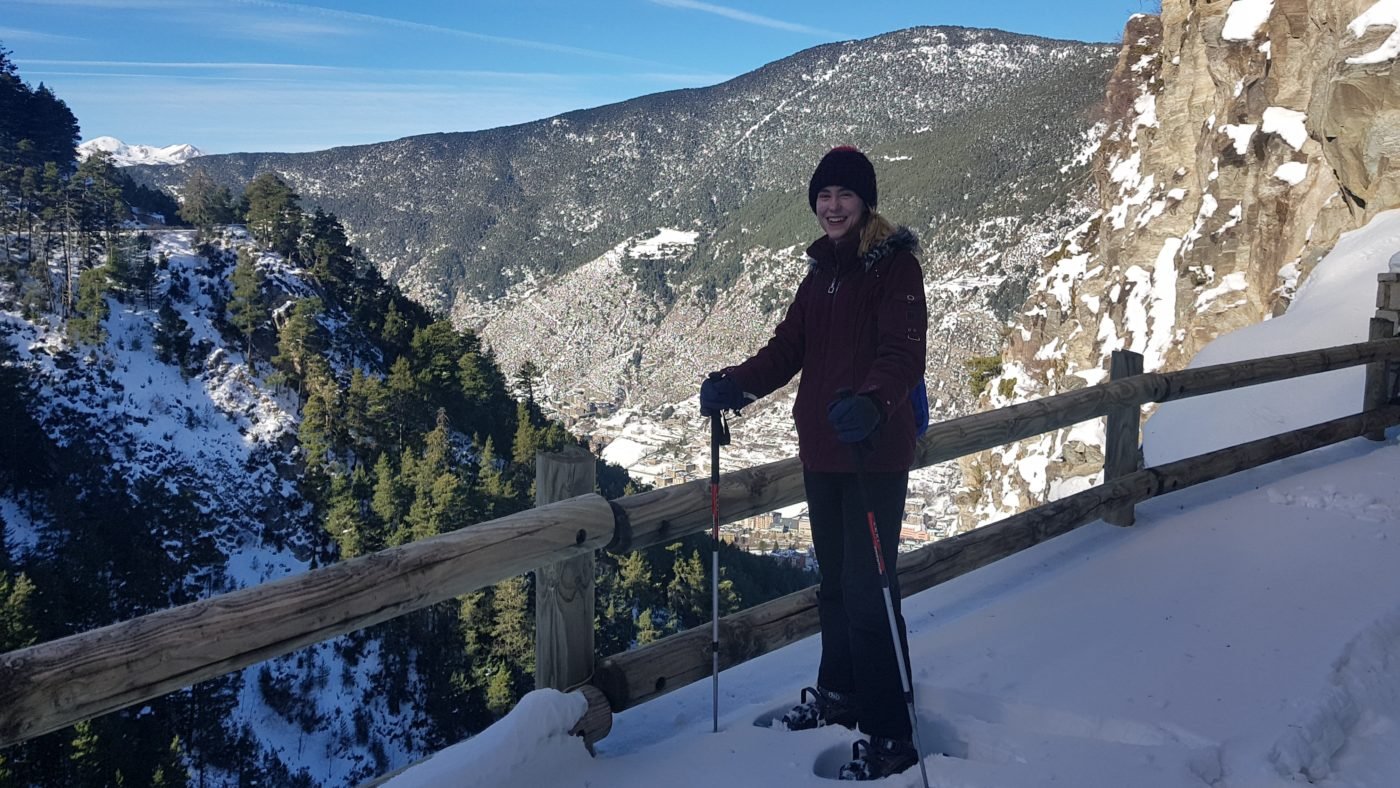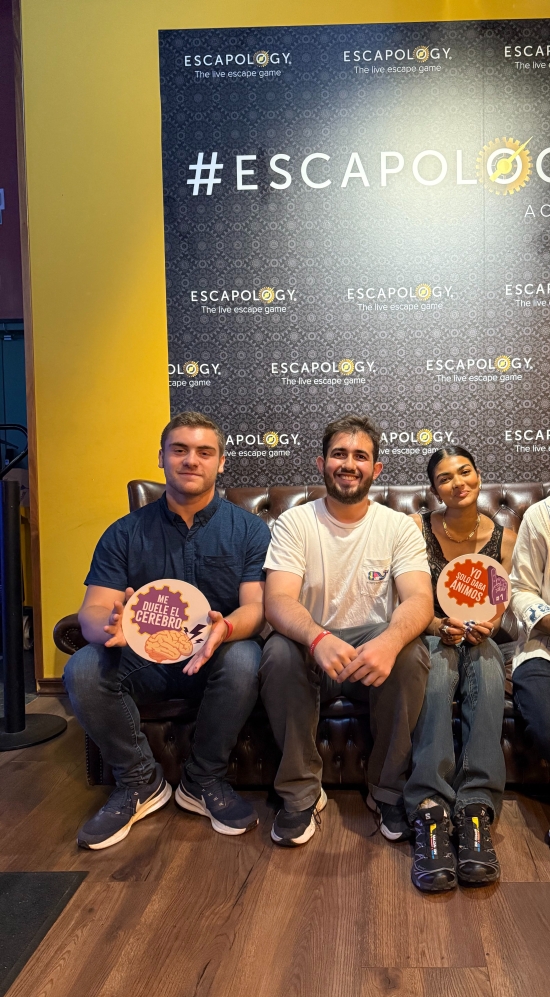The MISTI Spain Program
Living and working in Spain offers a unique opportunity to explore the country’s diverse regional cultures, varied landscapes, architectural gems and advances in engineering and technology; all while experiencing Spain’s approach to work-life balance.
MISTI Spain student opportunities include internships at leading companies, universities, and research institutes throughout the year, hands-on STEM teaching at Spanish high schools during IAP or a semester study abroad at the Universidad Carlos III de Marid (UC3M).
Program Opportunities
Internships
MISTI’s award-winning international internship program provides a one-of-a-kind, world-class experience for MIT students: the opportunity to gain real-life work experience in leading companies and labs around the world. Best of all, all expenses are paid, including airfare.
Opportunities are usually 8-12 weeks for the summer depending on the host and longer placements can be arranged.
To apply, must complete Launchpad Application and then set up advisory meeting via Calendly.
We encourage you to attend an info session prior to setting up an individual advisory meeting. If you are a first year student, you are required to attend an info session (sessions welcome all students).
This fall, we held several virtual and in-person info sessions, where we shared information about requirements, the application process, and more. We invite you to watch the recording below of one of the sessions.
- Open to MIT undergrads, graduating seniors and graduate students in all disciplines that meet program requirements
- GPA 4.0 or better
- Relevant experience (UROPs, internships, etc.)
- First Years
- Must have a UROP in the fall or IAP and/or previous internship or research experience prior to application deadline
- Undergraduates:
- Spanish IV or equivalent proficiency
- One class on Spanish culture, history or society is recommended
- Graduate students:
- No language requirement; basic Spanish strongly recommended
- Culture class recommended
Check out the MIT Global Languages website for course availability and offerings
- Informational meetings are available year-round
- Complete the MISTI Launchpad Application – application will open in the fall
- Interview with Country Program Manager – October to February (as soon as MISTI Launchpad Application is complete)
- Select MISTI Spain as your top choice in the MISTI launchpad
- Application deadline: November 15th, rolling thereafter
- Internship matching process – January to March
- Mandatory Pre-Departure Sessions – Late March to Early May
Funding: Accepted students will receive a basic living stipend for airfare, food and accommodation. If you intend to take side trips, start saving as soon as you can!
Preparation: Once matched with a host, students must attend MISTI prep & training sessions and a checkout meeting with the program manager. The mandatory training sessions will address topics in Spanish culture and society, as well as practical information about living in Spain, and will be held during the spring semester. There will also be some materials and resources to review on Canvas.
Global Teaching Labs
Learn through teaching. GTL challenges MIT students to synthesize and present what they know, work in a team, and communicate with peers of different cultural backgrounds, all while sharing MIT's unique approach to science and engineering education with high school students around the world.
GTL offers a unique opportunity for MIT students to teach STEM subjects in Spanish high schools over IAP. Around 25 students will teach subjects such as physics, chemistry, math, biology, computer science, and robotics in Madrid, Catalunya, and Andorra. Some students will have the opportunity to develop and lead workshops.
This year, we will also offer 15 spots for students with a makerspace background to support the integration of makerspaces in bilingual schools in Catalunya. Edgerton Center experience is preferred.
All students receive a stipend to cover travel and additional expenses and stay with host families connected to their schools.
IAP 2026 Dates:
- Application opens: August 27th
- Info Session: Sept 9th, 2025 at 5:00 PM in 34-101
- Application deadline: September 17th at 11:59 PM
- Open to any MIT student (sophomore and above) willing to fully commit to a challenging teaching project
- Spanish III or equivalent Spanish language proficiency required
- GPA 4.0 or better
- Must be able to demonstrate practical teaching experience and/or interest in education
- Enthusiasm, positive attitude and flexibility are a must!
- Students will be selected based on the following criteria:
- Knowledge of subject matter
- Adaptability
- Leadership ability
- Communication skills
- Interest in/experience with teaching
- Interest in host country
- Fit with team/program
- Knowledge of subject matter
- Submit MIST GTL online application
- The program manager will review applications and hold interviews in the following weeks with a final selection made by the end of October
- For general deadlines, please refer to the MISTI GTL page.
- Please note, due to the high number of applications, individual appointments will not be accepted for the GTL Spain program
Sept: Submit MISTI GTL online application
Oct: Pre-selected students are invited by email to interview shortly after application deadline.
Nov - Dec: Students selected to participate will attend pre-departure trainings.
Jan: Most GTL programs take place during the last three weeks.
Feb: Students attend a mandatory re-entry session upon return.
Students will teach subjects such as biology, chemistry, computer science, physics, math, and robotics. Some schools in the Barcelona area are looking for students with makerspace experience specifically.
MISTI Spain connects with public, private and semi-private schools in large cities as well as small towns. Students are paired with a mentor teacher with whom they will develop a teaching plan to support the current curriculum and teach up to 20 hours/week. Some schools ask MIT students to create workshops with a final presentation at the end of the teaching period. All students live with host families associated with the school they are teaching at.
Students are expected to attend November training sessions on teaching skills and Spanish culture and education.
Some of the locations include Madrid and surrounding towns, Barcelona and surrounding towns, the Balearic Island of Mallorca, and the Principality of Andorra.

MISTI Global Classrooms are short-term—usually 2- to 3-week—opportunities to learn abroad alongside MIT faculty. This year, we will be offering two Global Classrooms in Spain over IAP:
- How to Grow Resilient Futures: Regenerative Agriculture and Economies in Catalunya, Spain
- 21L.590: The Spanish Incubator
- Where: Madrid, Spain
- Application Opens: September 27 at 5 PM
- Info Sessions: Sunday, Sept. 14th at 1 PM and Friday, Sept. 19th at 5:15 PM in 14E-310
- Application Deadline: October 15 at 5 PM
- Contact: Prof Margery Resnick (resnick [at] mit.edu (resnick[at]mit[dot]edu))
Study Abroad in Madrid
Direct enroll at Universidad Carlos III de Madrid (UC3M) for the fall, spring, or the full academic year. UC3M was established in 1989 with a focus on research. It has a wide diversity of Spanish students and international students.
Click here to learn more about UC3M.
Join us on September 18th at 4-270 at 5pm for our Study Abroad Info Session.
And visit the MISTI Study Abroad page to learn more about spending a semester or year abroad!
Applicants for UC3M need to be:
- Have a GPA of 4.0 or above
- In good academic standing
- In good judicial standing
- Up to date with the Communication Requirement
- Up to date with HASS courses
Contact MISTI if you have questions about your particular situation.
Complete your application for UC3M through the MISTI Portal. Once your application is complete, it will be reviewed by MISTI. You may be invited to a ~30 minute informal interview. Following the interview, you will receive a decision on your application and be given two weeks to confirm your space on the program.
Financial Aid:
Financial aid can be used to study abroad during academic terms. Awards will be adjusted based on expenses such as airfare, living expenses, and local tuition costs. Students should meet with their financial aid counselor and a MISTI Program Manager at least one term before they go abroad to start planning how aid will be affected. MISTI and Student Financial Services will work together to gather and verify cost information . Based on this information, financial aid counselors will advise students on their adjusted financial aid packages and process any refunds accordingly.
Scholarships:
Click here to learn more about external study abroad scholarships.
Spain is the 4th largest Eurozone economy with a parliamentary constitutional monarchy. Madrid itself is the capital of Spain and has a rich historic, artistic and cultural heritage; it is home to some of the best art museums in the world. Additionally, the Madrid Community region includes historic municipalities such as Alcala de Henares, Aranjuez, or El Escorial, and it is very near the monumental cities of Segovia and Toledo. As it is located in the center of Spain, traveling to other regions within the country is convenient.

Fall 2025
21G.700/770 Introductory Spanish for Heritage Learners
21G.703/753 Spanish III
21G.704/754 Spanish IV
21G.708 Spanish: Communication Intensive I
21G.707 Graphic Stories: Spanish and Latin American Comics
21G.710 Advanced Communication in Spanish: Topics in Language and Culture: Social Justice in The Spanish Speaking World
21G.715 Topics in Medicine and Public Health in the Hispanic World
21G.739 Globalization and Its Discontents: Spanish-speaking Nations
21G.740 The New Spain: 1977 to Present
21G.056 The Making of Modern Europe: 1789 to the Present
21G.059 Paradigms of European Thought
17.561 European Politics
21H.141 Renaissance to Revolution: Europe, 1300-1800
21H.165 A Survey of Modern African History
Spring 2026
21G.706/756 Spanish for Medicine and Health
21G.708 Spanish: Communication Intensive I
21G.711 Advanced Spanish Conversation and Composition: Perspectives on Technology and Culture
21G.713 Spanish through Film: Mexico, Chile, Argentina, and Spain
21G.714 Spanish for Heritage Learners
21G.717 Power and Culture: Utopias and Dystopias in Spain and Latin America
21G.735 Advanced Topics in Hispanic Literature and Film
21G.738 Literature and Social Conflict: Perspectives on Spain
21G.058/418 / 21A.132 Race and Migration in Europe
21L.019 Introduction to European and Latin American Fiction
21H.134 Medieval Economic History in Comparative Perspective
21H.185 Environment and History
Please consult the course catalog for more details.
Bridging the language barriers in health
MISTI Better World Story 2018: Teaching at CFP in Andorra!
"Looking back, the internship I did Freshman year with MISTI Spain was critical in setting up my career. It set me up to getting my Sophomore year internship, which allowed me to get my dream internship at Tesla during my junior year. Of course, it was also a great opportunity to travel and live in Spain. I am very grateful for the MIT MISTI program and hope it continues to help future generations of MIT students."
Mateo Mariscal, intern at INSIA, the Polytechnic University of Madrid’s institute for automotive research
Meet Your Program Manager

Get in touch with Alicia Goldstein Raun, Managing Director for MIT-Spain, to get your questions answered.
Meet Your Program Assistant

Get in touch with Gabriela Díaz Quiñones to get your questions answered.
Spain Events
Our Partners





![]()








